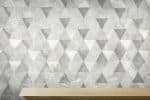The world of ecommerce business is one that thrives on change and evolution. With constant advancements in technology, trends, and user preferences, it’s never been more critical to stay ahead of the curve in ecommerce. One key aspect of this is site design – an essential element that can have a significant impact on user experience and conversion rates. With this in mind, let’s delve into how ecommerce retailers can optimize their site design to enhance the user experience and increase conversions.
Understanding the Importance of User Experience
When it comes to ecommerce, user experience (UX) is more than just a buzzword. It’s a concept that encompasses everything from how easy it is for customers to navigate your website, to the overall feeling they get when interacting with your online store.
A découvrir également : What Are the Effective Strategies for Small Businesses to Leverage Influencer Marketing in Niche Markets?
User experience is an area that requires careful attention because it directly affects your customers’ perception of your brand. A poor UX can deter potential customers and drive them towards your competitors, while a good UX can attract and retain customers, leading to higher conversion rates.
The primary aim of ecommerce site design should be to make the user’s journey as seamless as possible. Simplifying the process of product discovery, selection, and purchase can drastically enhance the UX. Similarly, a clean, uncluttered design with easy-to-read fonts, appealing colors, and intuitive navigation can have a positive impact on the user experience.
Cela peut vous intéresser : What Are the Key Considerations for Businesses When Integrating AI into Customer Service Processes?
Incorporating Conversion Rate Optimization (CRO)
Conversion Rate Optimization (CRO) is a systematic, data-driven approach to improving the performance of your ecommerce website. It involves understanding how users move through your site, what actions they take, and what’s stopping them from completing your desired actions.
CRO is a critical aspect of ecommerce site design because it helps you remove obstacles in the conversion funnel and make it easier for users to reach their goals and your goals. It’s about creating an online experience that’s so compelling, your visitors can’t help but take the action you want them to take, whether that’s making a purchase, signing up for a newsletter, or downloading a guide.
A/B testing is an integral part of CRO. It involves testing two versions of a webpage to see which performs better for a given conversion goal. By making data-backed decisions, you can optimize your ecommerce site design to maximize conversions.
Emphasizing Mobile-Friendly Design
With the rise of smartphones, mobile ecommerce or m-commerce has become increasingly popular. Today’s customers are not just browsing, but also making purchases on their mobile devices. Therefore, having a mobile-friendly design is no longer an option but a necessity for ecommerce retailers.
A mobile-optimized site design ensures that your website looks and functions well on all devices, regardless of their screen size. It involves implementing responsive design, which means your website dynamically adjusts to fit the screen on which it’s being viewed. This is crucial because a site that’s difficult to navigate or slow to load on mobile can frustrate users and drive them away, negatively impacting your conversion rate.
Moreover, Google also considers mobile-friendliness as a ranking factor. So, a mobile-optimized site can help improve your search engine visibility, attracting more organic traffic, and potentially increasing conversions.
Streamlining the Checkout Process
Cart abandonment is a common issue in ecommerce, with customers leaving the site without completing their purchase. One of the main reasons for this is a complicated or time-consuming checkout process.
To combat cart abandonment and boost conversions, it’s crucial to streamline the checkout process. This can be achieved by reducing the number of steps, offering guest checkout options, providing multiple payment methods, and clearly displaying all costs, like shipping and taxes, upfront.
Furthermore, reassuring customers about their data security can also enhance their checkout experience. This can be done by integrating trusted security badges and implementing SSL encryption on your site.
Leveraging High-Quality Product Images and Descriptions
Finally, the quality of your product images and descriptions can significantly impact user experience and conversions. Customers can’t physically inspect products in an online store, so they rely heavily on images and descriptions to make purchasing decisions.
High-resolution, professional images that clearly showcase the product from multiple angles can enhance the user experience and instill confidence in your products. Similarly, detailed and accurate product descriptions can help customers understand the product’s features, benefits, and uses, encouraging them to make a purchase.
In conclusion, optimizing your ecommerce site design for enhanced user experience and conversion is not a one-time task. It requires continuous testing, learning, and iteration. But by focusing on the areas outlined above, you can create an online shopping experience that not only meets but exceeds your customers’ expectations, leading to increased conversions and revenue.
Harnessing the Power of Social Media
In today’s digital age, social media plays a pivotal role in shaping the shopping experience. More than ever, customers are using social media platforms to discover new brands, products, and engage with their favorite online stores. This makes it essential for ecommerce retailers to harness the power of social media not only for advertising but also for optimizing their site design.
Including social sharing buttons on your product pages makes it easy for visitors to share your products on their favorite social media networks, increasing the visibility of your products. More important, it offers an opportunity for you to leverage user-generated content, such as customer reviews and ratings, which can directly influence the buying decision of potential customers.
Research has shown that prospective buyers consider customer reviews during their purchase journey. Integrated reviews and ratings on your ecommerce website can significantly enhance user experience and conversion rates. By providing shoppers with peer opinions about the products, you’re helping them make informed decisions, thereby positively influencing their confidence in their purchase decision.
Furthermore, integrating social media platforms with your website design can provide valuable insights into user behavior. By tracking the interactions and engagement on these platforms, you can gather data about your customers’ preferences, interests, and shopping habits. This data can in turn be leveraged to personalize the user experience and implement best practices in digital marketing, leading to a higher conversion rate.
Implementing Continual Conversion Optimization Techniques
The ecommerce landscape is dynamic and consumer behavior is constantly evolving. To stay competitive, ecommerce retailers must continually refine and improve their site design and conversion optimization strategies. Regularly reviewing and updating your website design based on user behavior and feedback can lead to substantial improvements in the user experience and conversion rate.
A/B testing and heat map analysis are two methods that can provide valuable insights into user behavior on your site. Heat map analysis, in particular, can help visualize how users are interacting with your website, showing where they click, tap, or scroll. This information can help identify areas of your site that might be causing confusion or hindering the checkout process, allowing for targeted improvements.
While A/B testing can help determine which design elements are most effective in driving conversions. For example, testing different call-to-action buttons, color schemes, or webpage layouts can provide data-driven insights into what resonates best with your audience.
To stay abreast of changing trends, it’s a good idea to follow ecommerce conversion best practices and continually educate yourself about the latest digital marketing strategies. Participating in online forums, attending industry events, and subscribing to relevant blogs and newsletters can provide valuable insights and inspiration.
Wrapping Up
In a nutshell, optimizing your ecommerce site design for enhanced user experience and increased conversion rates is not a one-off task, but rather an ongoing process that requires careful planning, strategy, and execution. By understanding the importance of user experience, incorporating conversion rate optimization techniques, emphasizing mobile-friendly design, streamlining the checkout process, leveraging high-quality product images and descriptions, harnessing the power of social media, and implementing continual conversion optimization techniques, you can create a shopping experience that not only meets but exceeds your customers’ expectations.
While it may seem daunting at first, investing time and resources in improving your site design and UX can reap significant rewards, including increased customer satisfaction and loyalty, reduced cart abandonment, and ultimately, higher revenue. Remember, the key to successful ecommerce conversion optimization is continual testing, learning, and iterating based on insights gained from user behavior, customer feedback, and industry best practices.
















